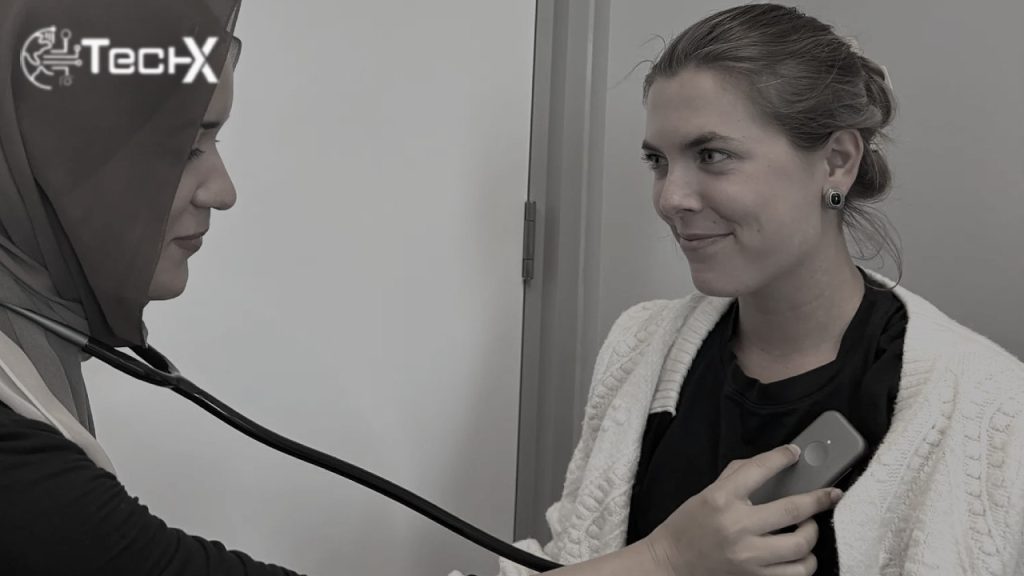A groundbreaking AI stethoscope developed at Imperial College London is transforming heart disease diagnosis. This innovative device can identify serious conditions like heart failure and valve disease within mere seconds. It represents a significant leap forward from the traditional stethoscope, combining acoustic and electrical heart data for a more comprehensive, immediate analysis directly in primary care settings.
How the Device Works
The unit is remarkably compact, roughly the size of a standard playing card. It features a built-in microphone to capture detailed heart sounds. Simultaneously, it records electrical heart signals via integrated ECG electrodes. This dual-data approach provides a richer picture of cardiac health than listening alone. The process is non-invasive and as simple as a standard physical examination for the patient.
Cloud-Powered Analysis
Once collected, the data is securely uploaded to a cloud-based platform for analysis. There, a sophisticated AI algorithm gets to work. This algorithm has been trained on tens of thousands of anonymized patient records. This vast dataset enables it to recognize subtle patterns indicative of disease. Within moments, the results are sent back to the clinician, flagging any likely problems.
Impressive Real-World Results
The tool’s efficacy was proven in a large-scale trial across over two hundred GP surgeries. More than twelve thousand patients were examined using the AI stethoscope. Their outcomes were compared to those from practices using standard care. The results were striking. Patients screened with the AI tool were twice as likely to receive a timely heart failure diagnosis.
Also Read: Atlas Honda Launches Three Models of CG125 2026 in Pakistan
Detecting More Conditions
Beyond heart failure, the AI stethoscope dramatically improved detection rates for other critical conditions. It identified significantly more cases of atrial fibrillation, a common irregular heart rhythm that increases stroke risk. The device also excelled at detecting structural heart valve diseases. This earlier identification is crucial for initiating life-saving treatments and preventing severe complications down the line.
Benefits for Patients and Systems
Senior cardiologists and healthcare funders have praised this innovation. Its primary benefit is enabling much earlier detection of serious cardiac issues. This accelerates access to necessary treatments and medications for patients. For health systems, it promises to reduce costly emergency hospital admissions by managing conditions proactively in the community, easing the burden on hospitals.
Overcoming Practical Challenges
The trial also highlighted key implementation challenges. Some clinics used the device less frequently over time. This underscores that technology alone is not a silver bullet. Successful adoption requires adequate training for staff and seamless integration into existing clinical workflows. Establishing clear referral pathways for positive cases is equally vital for sustained use.
Future Refinements Needed
Developers and health services are now focusing on the next steps. Wider rollout will involve closely monitoring the algorithm’s performance, particularly its rate of false positives. Refining the technology to minimize unnecessary referrals will be key. Ongoing work will also address the practical integration requirements to ensure the tool supports, rather than disrupts, busy clinics.
A New Era for Primary Care
This AI stethoscope heralds a definitive shift towards advanced diagnostics in frontline medicine. It upgrades the most iconic symbol of the medical profession for the digital age. Health systems should seriously consider it as a tool to accelerate cardiac diagnosis. Its potential to reshape diagnostic timelines and improve patient outcomes is immense and transformative.
The Path to Widespread Adoption
Broader acceptance across global healthcare will depend on several factors. The cost of the devices and the required training programs are crucial considerations. Furthermore, developers must continue to demonstrate their utility and cost-effectiveness at a much larger scale. Despite these hurdles, the future of the stethoscope is intelligent, connected, and powered by artificial intelligence.
